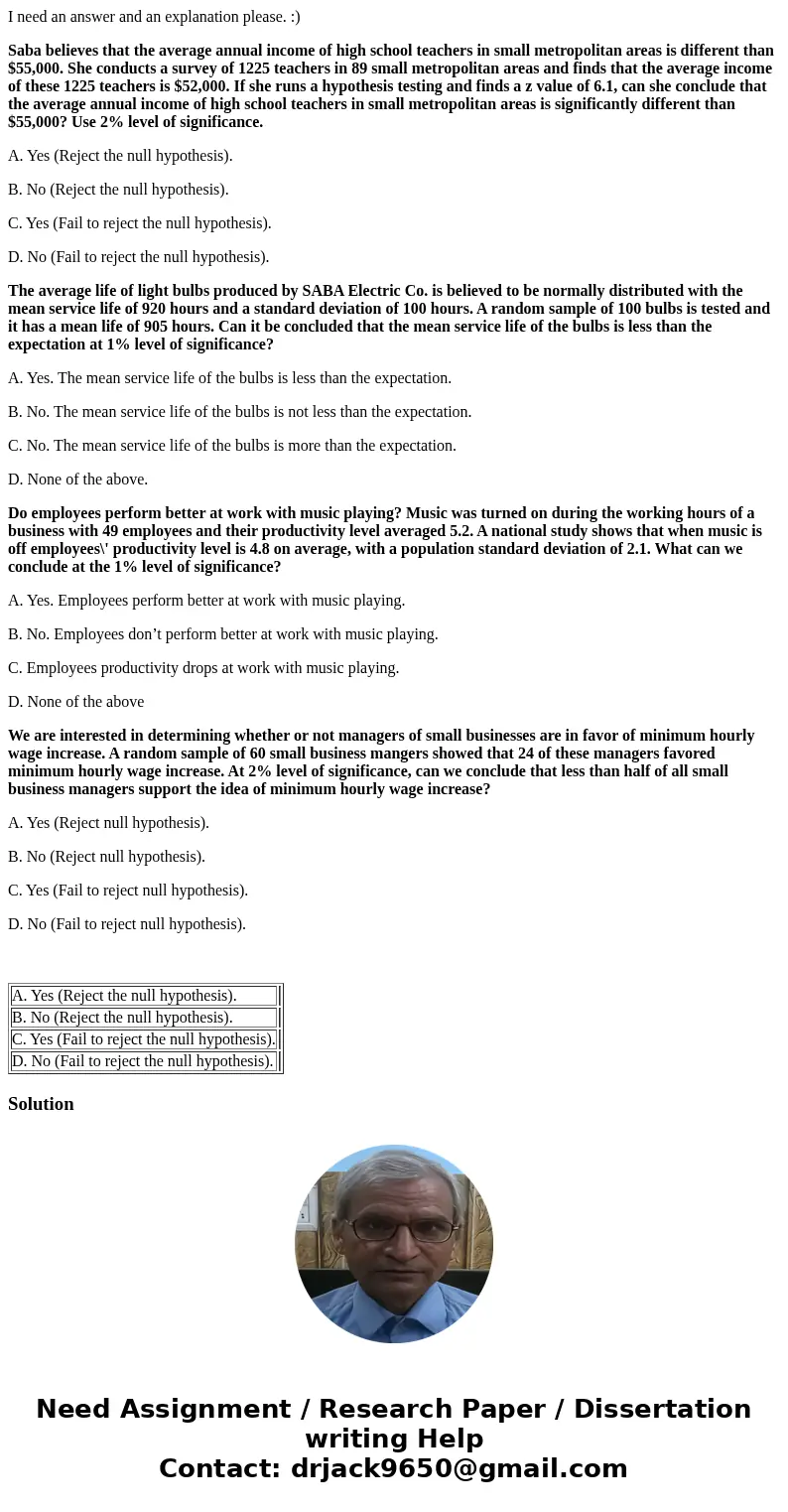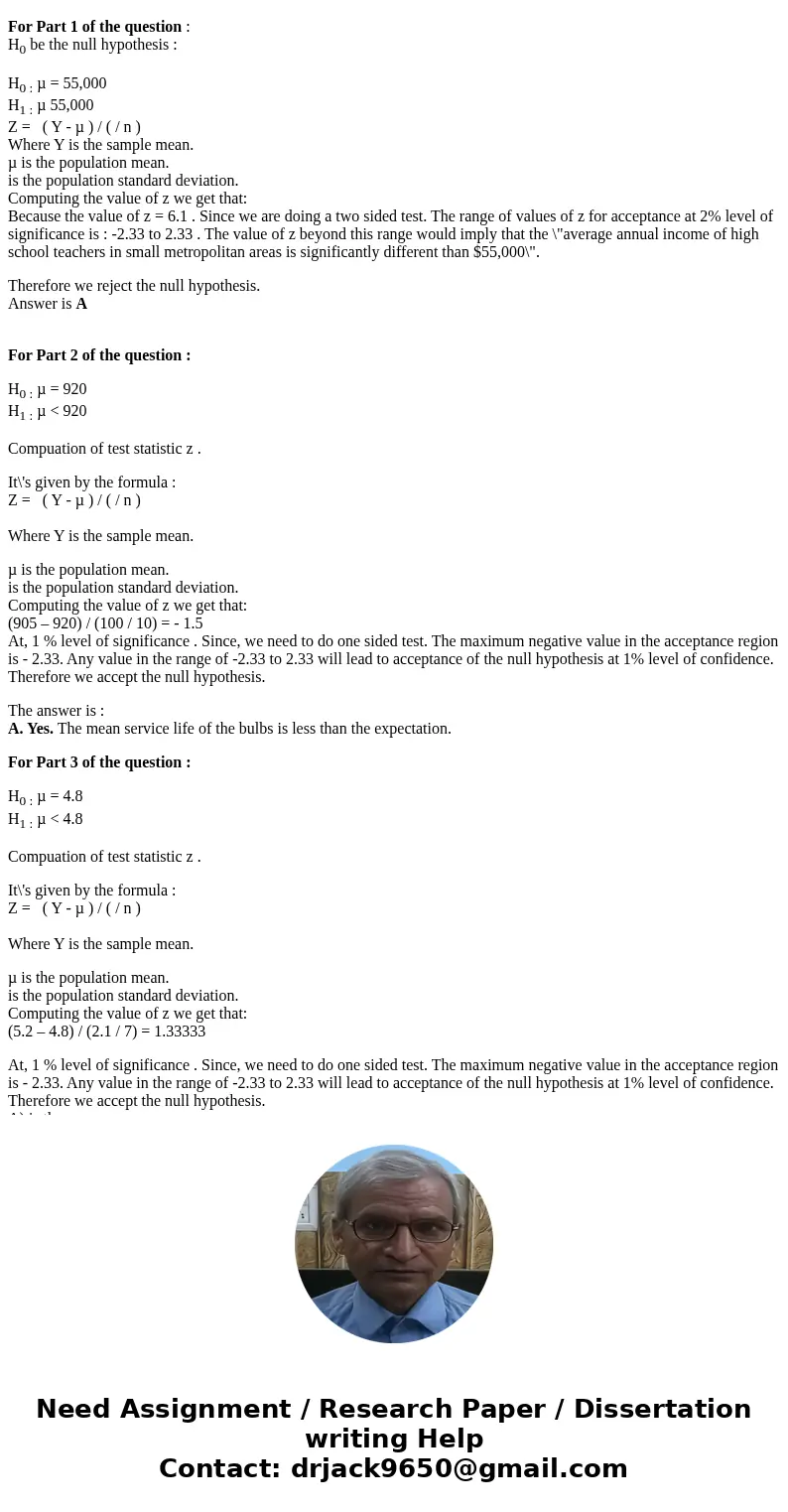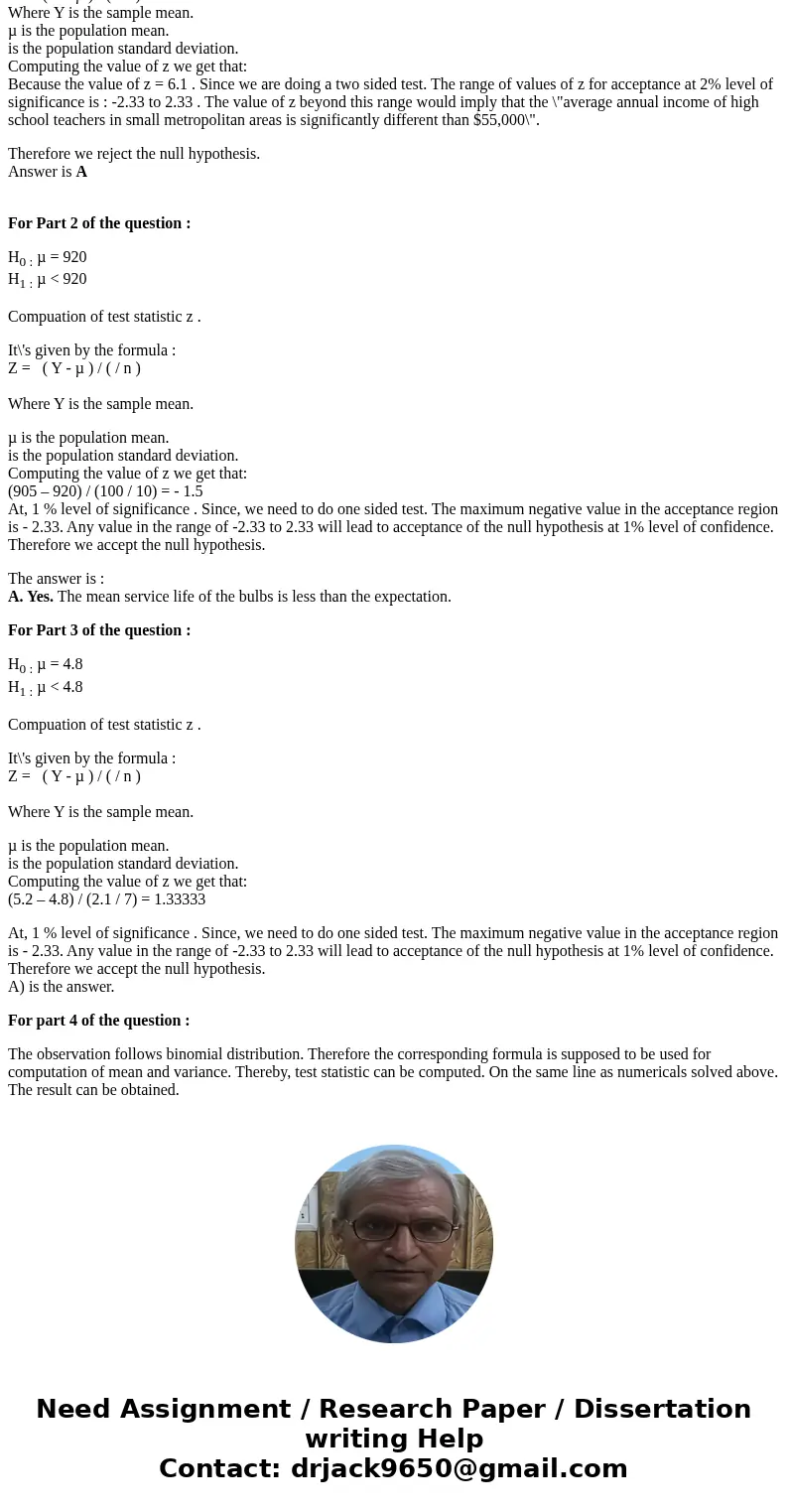I need an answer and an explanation please Saba believes th
I need an answer and an explanation please. :)
Saba believes that the average annual income of high school teachers in small metropolitan areas is different than $55,000. She conducts a survey of 1225 teachers in 89 small metropolitan areas and finds that the average income of these 1225 teachers is $52,000. If she runs a hypothesis testing and finds a z value of 6.1, can she conclude that the average annual income of high school teachers in small metropolitan areas is significantly different than $55,000? Use 2% level of significance.
A. Yes (Reject the null hypothesis).
B. No (Reject the null hypothesis).
C. Yes (Fail to reject the null hypothesis).
D. No (Fail to reject the null hypothesis).
The average life of light bulbs produced by SABA Electric Co. is believed to be normally distributed with the mean service life of 920 hours and a standard deviation of 100 hours. A random sample of 100 bulbs is tested and it has a mean life of 905 hours. Can it be concluded that the mean service life of the bulbs is less than the expectation at 1% level of significance?
A. Yes. The mean service life of the bulbs is less than the expectation.
B. No. The mean service life of the bulbs is not less than the expectation.
C. No. The mean service life of the bulbs is more than the expectation.
D. None of the above.
Do employees perform better at work with music playing? Music was turned on during the working hours of a business with 49 employees and their productivity level averaged 5.2. A national study shows that when music is off employees\' productivity level is 4.8 on average, with a population standard deviation of 2.1. What can we conclude at the 1% level of significance?
A. Yes. Employees perform better at work with music playing.
B. No. Employees don’t perform better at work with music playing.
C. Employees productivity drops at work with music playing.
D. None of the above
We are interested in determining whether or not managers of small businesses are in favor of minimum hourly wage increase. A random sample of 60 small business mangers showed that 24 of these managers favored minimum hourly wage increase. At 2% level of significance, can we conclude that less than half of all small business managers support the idea of minimum hourly wage increase?
A. Yes (Reject null hypothesis).
B. No (Reject null hypothesis).
C. Yes (Fail to reject null hypothesis).
D. No (Fail to reject null hypothesis).
| A. Yes (Reject the null hypothesis). | |
| B. No (Reject the null hypothesis). | |
| C. Yes (Fail to reject the null hypothesis). | |
| D. No (Fail to reject the null hypothesis). |
Solution
For Part 1 of the question :
H0 be the null hypothesis :
H0 : µ = 55,000
H1 : µ 55,000
Z = ( Y - µ ) / ( / n )
Where Y is the sample mean.
µ is the population mean.
is the population standard deviation.
Computing the value of z we get that:
Because the value of z = 6.1 . Since we are doing a two sided test. The range of values of z for acceptance at 2% level of significance is : -2.33 to 2.33 . The value of z beyond this range would imply that the \"average annual income of high school teachers in small metropolitan areas is significantly different than $55,000\".
Therefore we reject the null hypothesis.
Answer is A
For Part 2 of the question :
H0 : µ = 920
H1 : µ < 920
Compuation of test statistic z .
It\'s given by the formula :
Z = ( Y - µ ) / ( / n )
Where Y is the sample mean.
µ is the population mean.
is the population standard deviation.
Computing the value of z we get that:
(905 – 920) / (100 / 10) = - 1.5
At, 1 % level of significance . Since, we need to do one sided test. The maximum negative value in the acceptance region is - 2.33. Any value in the range of -2.33 to 2.33 will lead to acceptance of the null hypothesis at 1% level of confidence.
Therefore we accept the null hypothesis.
The answer is :
A. Yes. The mean service life of the bulbs is less than the expectation.
For Part 3 of the question :
H0 : µ = 4.8
H1 : µ < 4.8
Compuation of test statistic z .
It\'s given by the formula :
Z = ( Y - µ ) / ( / n )
Where Y is the sample mean.
µ is the population mean.
is the population standard deviation.
Computing the value of z we get that:
(5.2 – 4.8) / (2.1 / 7) = 1.33333
At, 1 % level of significance . Since, we need to do one sided test. The maximum negative value in the acceptance region is - 2.33. Any value in the range of -2.33 to 2.33 will lead to acceptance of the null hypothesis at 1% level of confidence.
Therefore we accept the null hypothesis.
A) is the answer.
For part 4 of the question :
The observation follows binomial distribution. Therefore the corresponding formula is supposed to be used for computation of mean and variance. Thereby, test statistic can be computed. On the same line as numericals solved above. The result can be obtained.



 Homework Sourse
Homework Sourse